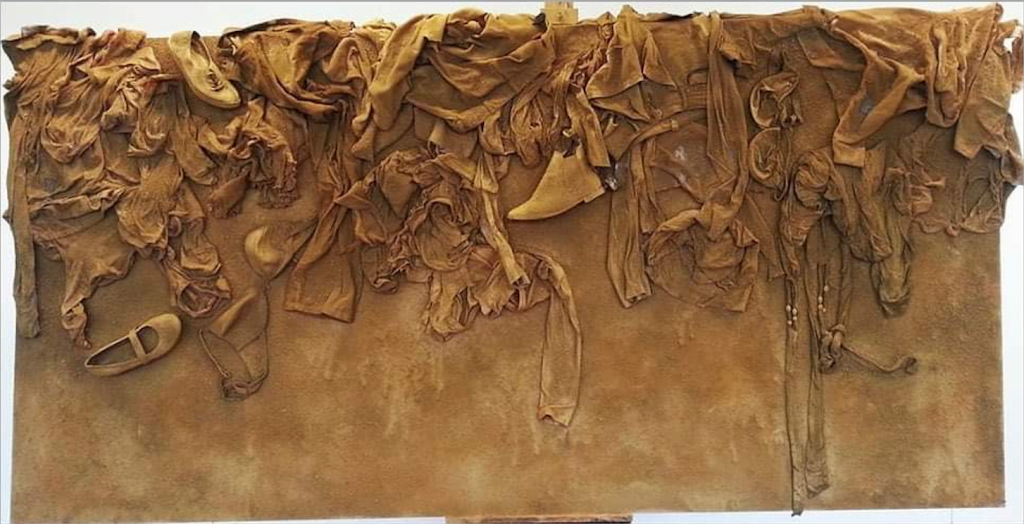Ali Raza was born in South Kurdistan in 1980, right as the Iran-Iraq war was beginning to unfold. The presence of the military marked his childhood, and he suffered from multiple losses in his family because of genocide. His parents eventually decided to migrate to Iran after the 1991 Kurdish Uprising, and his family travelled through the mountains for 26 days to reach the border.
Trauma, loss, and war are inextricably linked to his upbringing, which led him to question how he could heal from all these experiences. He grew up around artists and particularly admired his brother’s drawings when he was younger. Yet, it was realisation that art had the potential to heal and to talk about painful social, political, and personal experiences that moved Ali and pushed him to pursue a career as an artist. He attended the Erbil College of Fine Art between 1998 and 2002. After his studies in Erbil, Ali decided he wanted to voice his opinions on Human Rights and other important – if controversial – issues. In 2007, he moved to Ireland, where he continued his artistic education. He studied at The Galway Mayo Institute of Technology and is currently writing a thesis about dealing with traumatic memory and places.
Ali Raza’s perseverance is inspiring, and so is his art. His installation piece The Story of Sand deals with the Anfal genocide – which resulted in the death of over 182,000 civilians. It is not easy to take on such tough subjects, but Ali’s work deals with this event both respectfully and beautifully.

Ali Raza uses many forms of art: he has done paintings, sculptures, sound art, video art, prints and installation art. For him, medium is not as important as the purpose and the message of the art. The fact that Ali Raza can make art that opens discussions about traumatising events is impressive. And for Ali, it is also essential – a way of reckoning with his own past.
With The Story of Sand, he wanted to show the real-life impacts this traumatic event had on him, his family and all the others that were affected by the Anfal Genocide’s tragedy. In this art piece, he used real elements of daily life – real shoes and real clothes – mundane objects that could have been anyone’s belongings, including victims of genocide. The fact that they are all buried in sand shows the environment in which these killings happened. Ali Raza gives the viewer a sense of what walking through the Sahara Desert would have felt like – extremely warm, dripping with sweat: a transformative and traumatic environment that is so distant from the mountainous regions of Iraqi Kurdistan.
When looking at this impressive artwork, one can only be struck by the story of destruction it tells. The message seems loud and clear, as if it were written on the unburied, sand-filled clothes: Never forget.
Ali Raza is ambitious and still has many plans for his artistic career. He is currently working on over ten different projects alongside his thesis. His art is both touching and humbling, and the stories they represent are difficult to forget.
To find out more about Ali Raza, you can read more about him here: https://www.saatchiart.com/AliRaza
And follow him on Facebook: https://www.facebook.com/AliRazaVisualArtist

